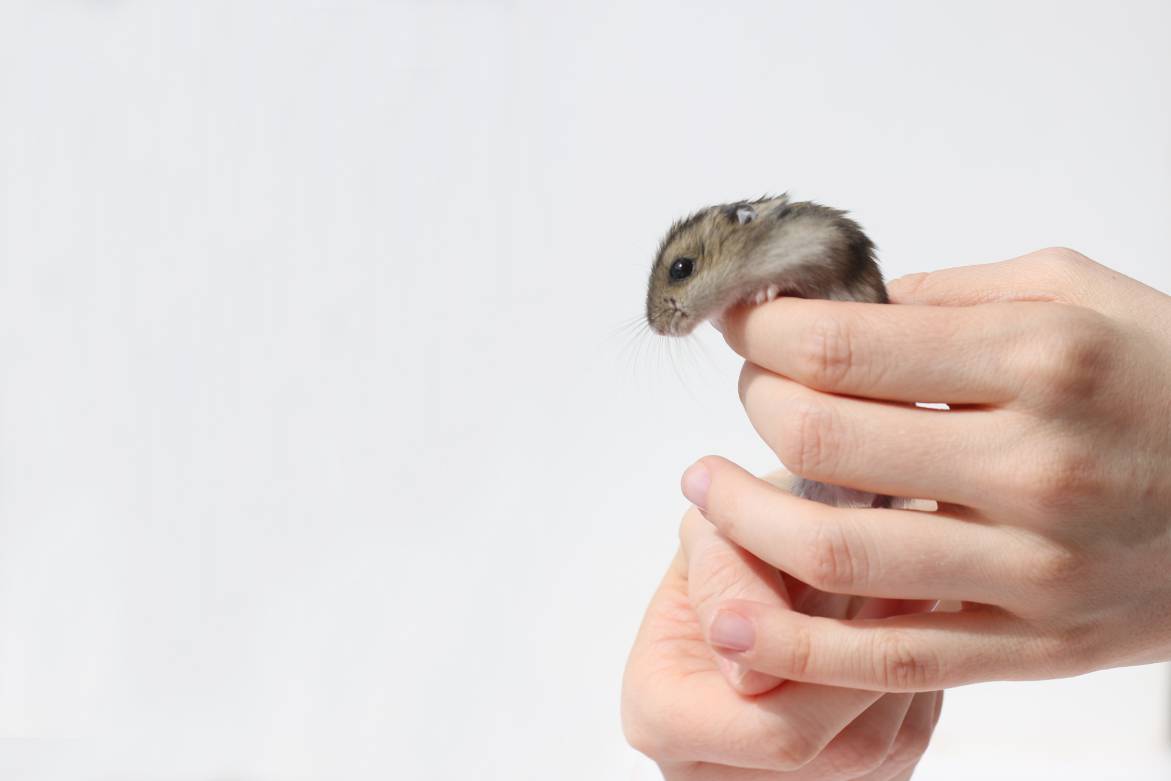20 Facts About Hamsters: Temperament, Health & Behavior
By Ashley Bates
Updated on
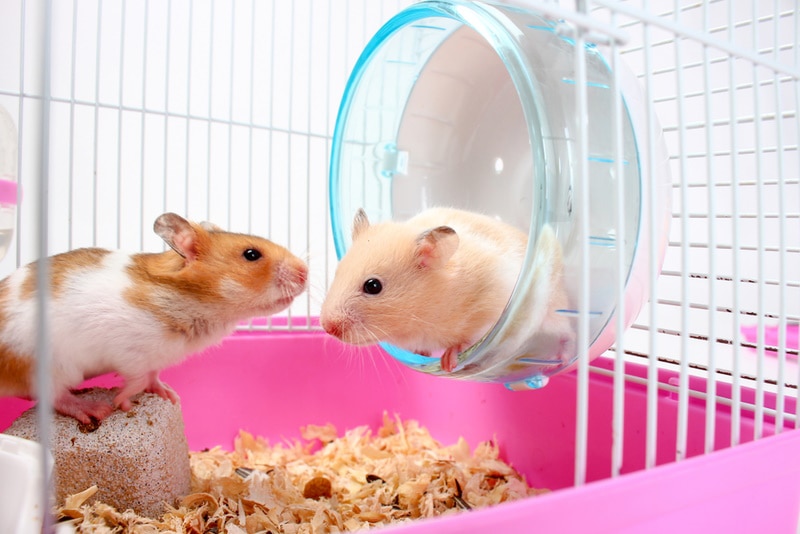
Hamsters are one of the most common small rodents you can find in pet shops everywhere. They are popular because they are readily available, adorable, and relatively easy to care for. While hamsters certainly aren’t for everyone, they can make very good pets for adults and children alike, permitting you to have the appropriate education and offer direct supervision.
Here are some hamster facts you might find helpful, interesting, and entertaining.
The 20 Facts About Hamsters
1. There are Tons of Different Hamsters Across the World
You see hamsters at pet stores all over the place! But where do they come from? After all, if you go out in your backyard, you are extremely unlikely to see a wild hamster running by. Wild hamster species originated from Europe, Asia, and the Middle East and have been domesticated to become popular pets.
You might not know this, but there are over 20 different species of hamster across the globe. However, only 5 hamster varieties are commonly sold as pets.
- Dwarf hamsters, including Roborovskii (Phodopus roborovskii), Campbell’s Russian Dwarf (Phodopus campbelli) and Dwarf Winter White Russian (Phodopus sungorus)
- Syrian (Mesocricetus auratus)
- Chinese (Cricetulus griseus)
Something interesting about the hamster species is that only the Russian Winter White and the Campbell’s Russian can interbreed and produce live young. It is absolutely not recommended to breed these two species together but it has been done. The other species of hamster cannot be interbred.
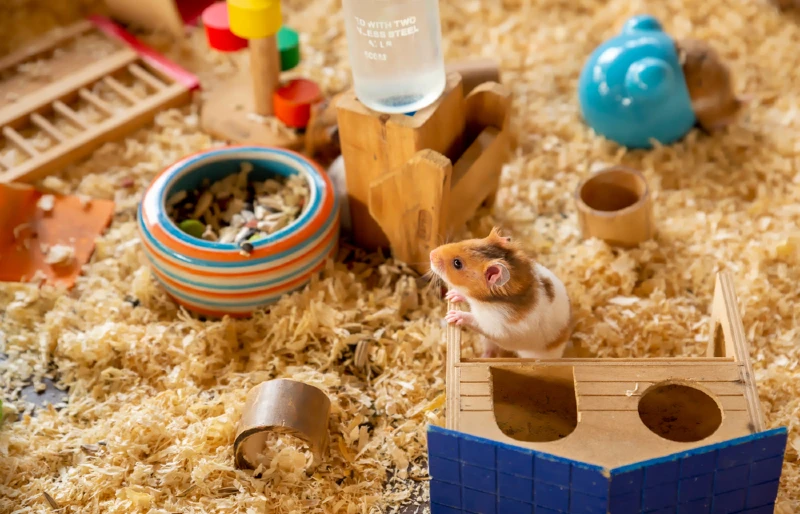
2. Hamsters Are Hoarders
If you have a hamster, you’ve probably noticed their hoarding behavior. They absolutely love to find pieces of food and other objects and stash them into their bedding. They’re quite good at it too! You might get a couple of surprises when changing out the bedding each time you spot-clean or empty the cage.
This is why it is so imperative to clean out your hamster’s cage on a regular basis. Often they drag fresh foods into their bedding, and the food can rot, mold, and harbor bacteria.
3. Hamsters Can Catch a Cold from Humans
Like other rodents, hamsters can be susceptible to upper respiratory infections. But one interesting thing about the hamster is that they can catch colds from their human companions. That’s right! You can pass illnesses to your hamster.
While it isn’t necessarily a common occurrence, you should always avoid handling your little pet whenever you feel under the weather. Not all viruses are transmissible between the two species, but you should take precautions just in case!
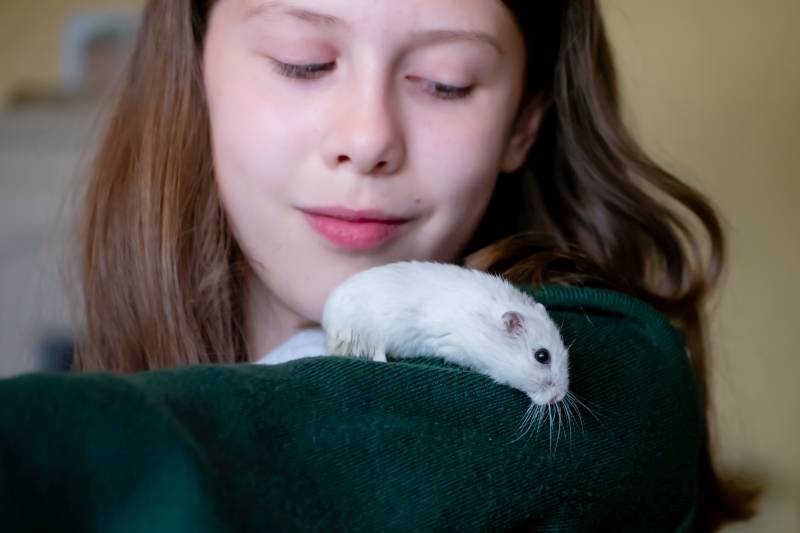
4. Hamsters Require Lots of Exercise
Hamsters enjoy their naps quite a lot, but they are rather busy bees. All hamster enclosures should come fully equipped with an exercise wheel, but often these are too small for the hamster. Be sure to select a wheel with a solid running surface to protect feet and bones. The wheel should also be large enough for your hamster to move freely inside without straining its back, and to easily enter and exit. This way, your hamster is able to run off their energy since they don’t have a lot of room to roam.
Some hamsters might be more energetic than others, so having a more sedate individual in the cage is not completely unusual. However, it would help if you still encouraged regular exercise to stop your hamster from becoming overweight and to keep its muscles and bones strong.
5. Hamsters Have Ever-Growing Teeth
You might look at a hamster’s mouth and think that they only have four incisors, but this isn’t true! They actually have 16 teeth, including rows of molars!
Hamsters, like many other rodents, have teeth called incisors. These teeth continuously grow throughout their lifetime. For this reason, it’s extremely important for them to file their teeth down naturally. In the wild, they chew on all sorts of things to keep their teeth neatly filed.
However, under human care, they will need certain materials to do the job, like wood and other hamster-friendly items.
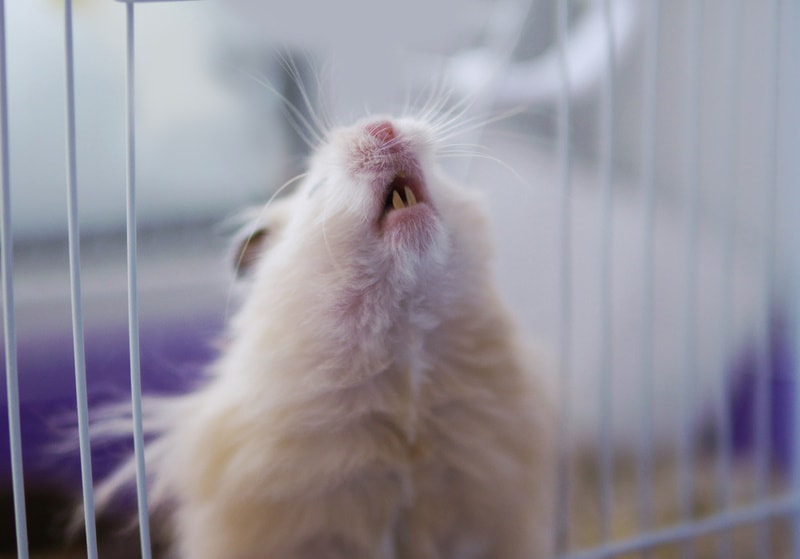
6. Hamsters Are Master Groomers
Hamsters very frequently clean themselves. They spend a large portion of their day grooming themselves.
However, obsessive grooming can be a sign of an underlying issue. If you feel like your hamster is spending too much time on this task, it can signal things like parasites, allergic reactions, or unclean living conditions. Each issue will need to be worked out according to the problem itself.
7. Hamsters Are Timid
People that are experienced with hamsters might tell you these are not the best pets for small children. Often because of their cuddly appearance, it seems as if they would make a perfect first-time pet. But hamsters are often timid and don’t always tolerate being handled very well.
Because of their timid nature, hamsters don’t always enjoy being handled and if startled they can bite. It’s very important to read a hamster’s body language before handling them and interacting with them during their wakeful and playful time, usually evenings are best.
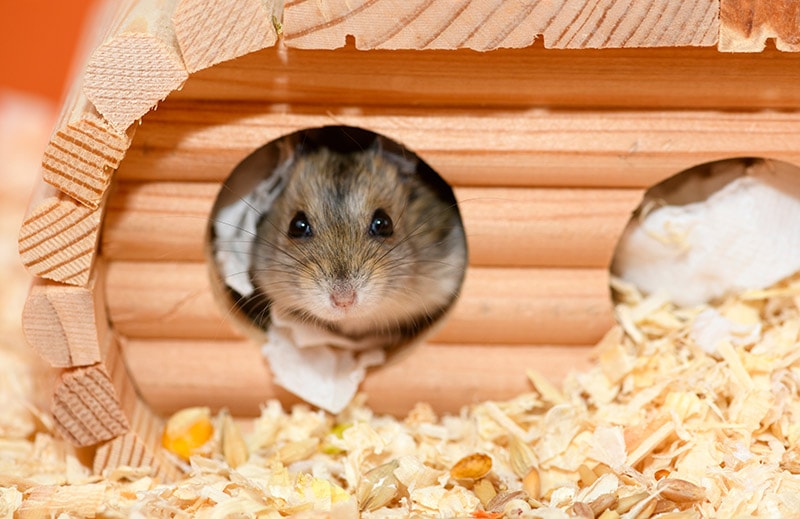
8. Hamsters Are Born With Their Eyes Closed
Like multitudes of other animals, hamsters are born with closed eyes and open their eyes at around day 14. Because these creatures are nocturnal, they have a difficult time seeing in the daylight. They can see best at twilight.
9. Hamsters Are Nocturnal
Hamsters are nocturnal creatures. That means they are most active during the night hours. Because they are domestic pets, it’s not uncommon for owners to get them out during the day when they are sleeping, but this is really not recommended. Hamsters need their sleep just like we do, so it’s not a good idea to wake your hamster up mid-slumber.
Because they are nocturnal, they will be bustling around the cage while you’re trying to rest. If you have a hamster, they run on their wheel or scurry about the cage much more when you’re ready to go to bed. So, some people set the cage out of their room at night to get some sleep!
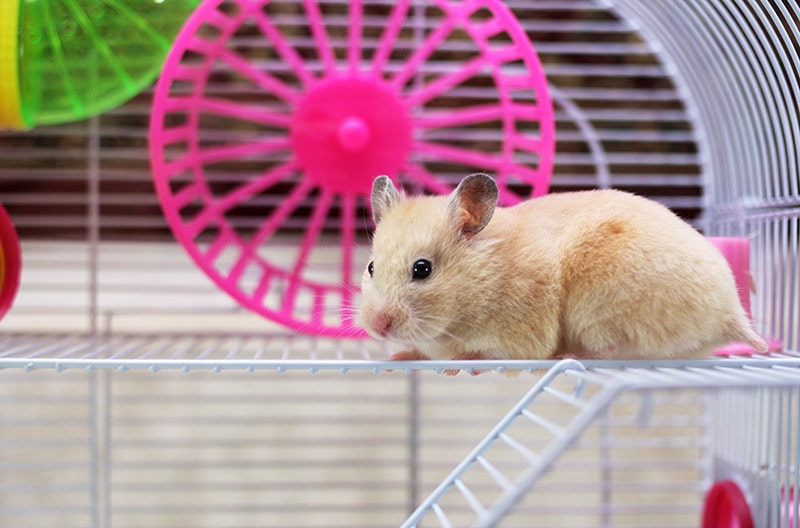
10. Hamsters Have a Keen Sense of Smell
Even though hamsters might not have the best vision, they have an impeccable sense of smell. Their sense of smell is what helps them navigate their surroundings, avoid predators, and keep their young safe in the wild.
Because they have such a strong sense of smell, it causes aversions to certain scents. Hamsters are thought to particularly despise a citrus scent as it is very overwhelming for them. Keep aerosols, chemicals, fragrances, and essential oil diffusers away from your little guy or gal.
11. Hamsters Have Large Storage Pouches
You might already know that hamsters store food in their cheeks. What you might not know is how extensive this process actually is. The outpouching of the cheeks extend along both sides of the head and neck all the way back to the shoulders. This is quite impressive.
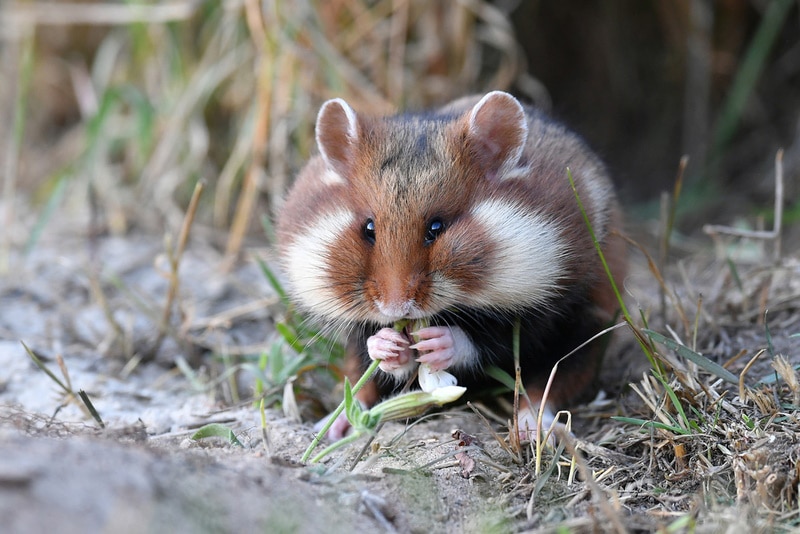
12. Hamster Can Dig Up to Three Feet
Impressively, hamsters are capable of digging 3 feet into the ground! They use these deeply dug tunnels to create a living space, food hoarding area, and even a bathroom! For this reason, hamsters stash food and use the bathroom on different sides of their cage.
This is why it is imperative to create deep, layered bedding for your hamsters to do what they do best. Creating a natural habitat for them will help them thrive in their environment and allow them to rummage around, hiding objects and tucking themselves away for a nap.
13. Hamsters Are Omnivores
Hamsters eat both plants and insects in the wild. Buying a commercial, hamster food will have all of these ingredients compressed into small cubes or pellets. That way, you don’t have to offer them live insects or worry about getting all of their necessary dietary items in a single meal. Make sure you use a pelleted diet, not a muesli style diet, as hamsters will pick out the sweeter, tastier parts and leave the rest.
A few healthy treats such as fruits, vegetables, or chewy treats sold in pet stores may be given but should be limited to not more than 10% of the total diet.
Be sure to remove any remnants from the cage, as these items can spoil and start to stink!
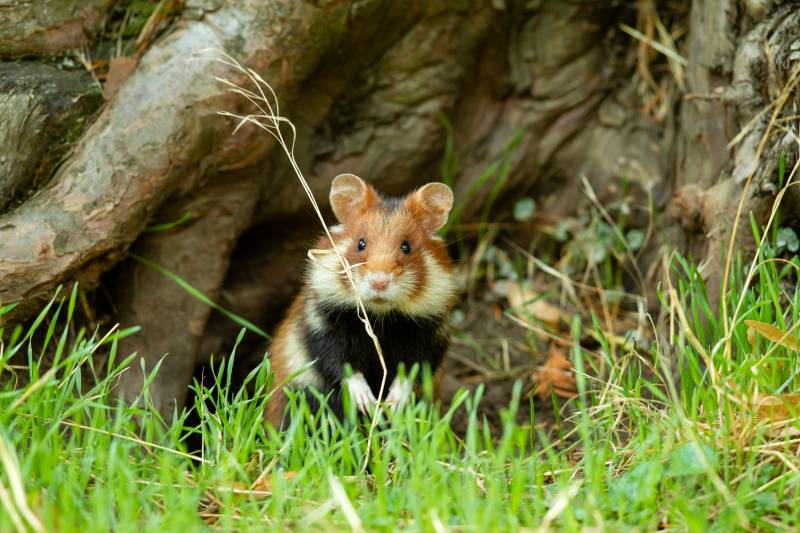
14. Hamsters Can Reproduce at 4 Weeks
Hamsters have the capability of reproducing early and in high numbers. After just 4-5 weeks of age, your hamster can become pregnant. This might seem crazy since they don’t even look fully developed.
But if you don’t separate the males from females, you will surely get an unexpected litter that can prove problematic. Hamsters are not always easy to find suitable homes for, and litters can be large, usually 6-8 pups.
15. Hamsters Are Not Lactose Intolerant
Surprisingly, hamsters can handle dairy! Many other rodent species are completely lactose intolerant, but hamsters aren’t among them. That means that unlike mice that can’t tolerate any cheese, hamsters can have a little tiny hunk from time to time.
Hamsters have pregastric pouches, which allows them to digest lactose in dairy. So, yes! You can give your hamster a little slice of cheese if you want.
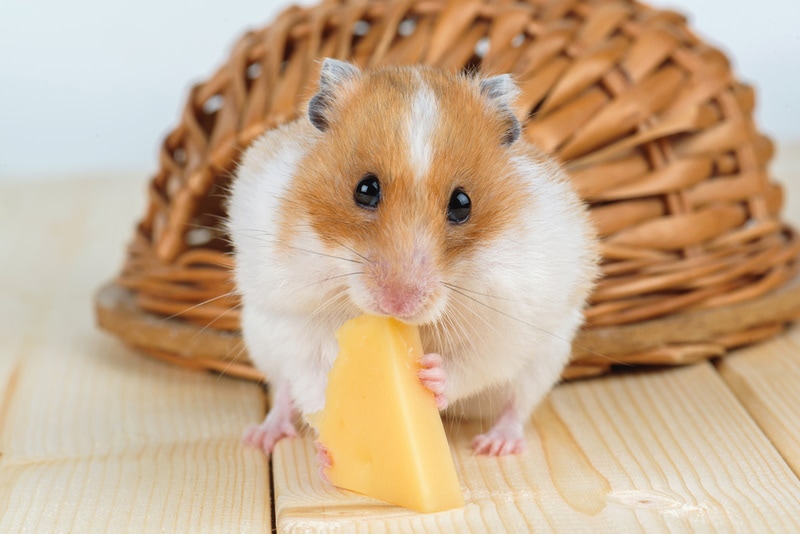
16. Hamsters Are Illegal in Certain Places
You can get a hamster at almost any pet shop across the nation. However, there are certain areas of the world where hamsters are illegal. Two examples include Australia and Hawaii. That is because the climates in these locations are prime for a hamster to thrive.
Therefore, if people accidentally lose their hamster or intentionally let it go, they could start to colonize, quickly reproduce, and become an invasive species.
17. Hamsters Prefer a Life of Solitude
While it might be common for you to go into a pet store and see a bunch of hamsters huddled together in the corner of a showcase cage, they much prefer to live by themselves. Syrian hamsters must live alone as they will fight other hamsters in their enclosure. A Syrian hamster therefore is a terrific pet if you only want your child to have a single animal that doesn’t require extra stimulation and additional company.
If you do want to get multiple hamsters, your best bet is to choose a dwarf hamster as these can live together if they are introduced properly. Always buy the same gender to avoid the quick and numerous pregnancies that can happen after that.
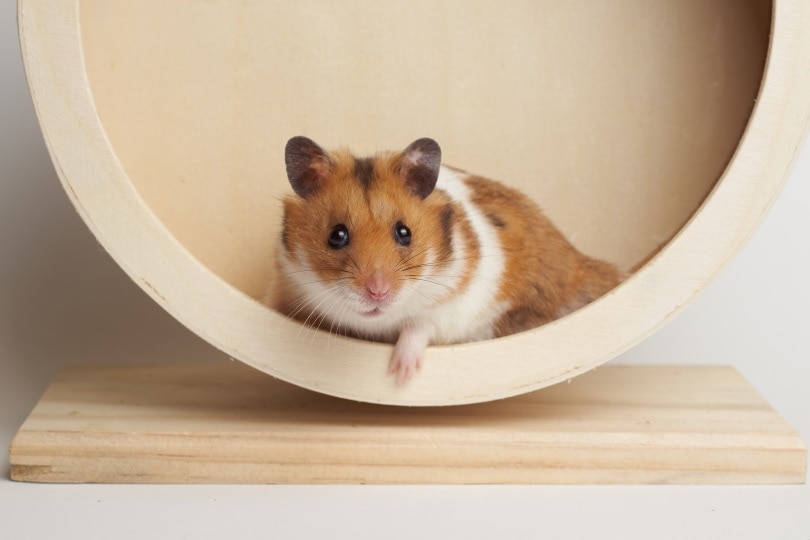
18. Hamsters Have Yellowy Orange Teeth
If you check out your hamster’s teeth, it may look like they could benefit from some dental work! But in all reality, seeing your hamster have yellowish-orange teeth is perfectly normal and healthy.
If their teeth are white, it can actually signal a malnutrition problem. So, it’s always best to see a dingy smile rather than pearly whites.
19. Hamsters Have Scent Glands on Their Hips
Hamsters have paired scent glands on their flanks that they use quite similarly to how a domestic cat would. They can scent mark different spaces allowing them to travel long distances and still find their way back in the wild. Under human care, you might see them marking spots when they are out for routine play.
This is your hamster’s way of getting to know their environment and making sure they can find their way around. Another reason why this is helpful is because they have very poor eyesight—hamsters have to sniff their way home and their scent markings are very useful for that.
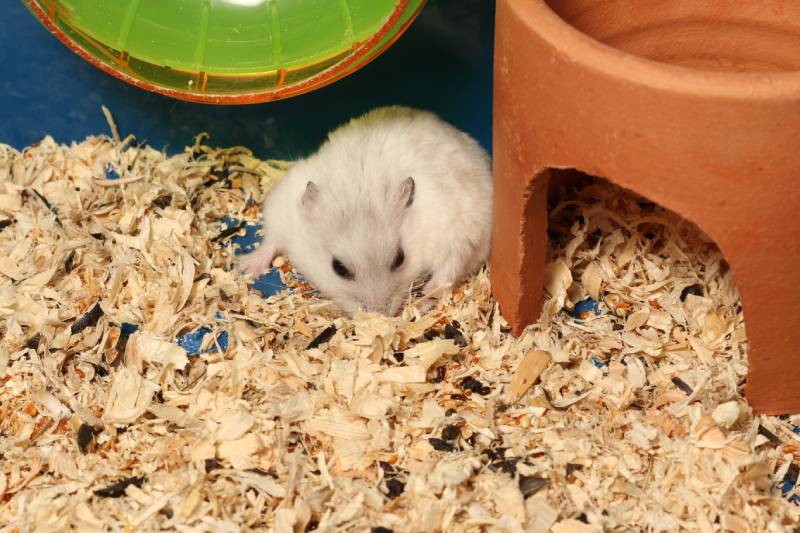
20. Hamsters Eat Their Poop
You read that right. Hamsters actually have two different kinds of poop that they excrete. One of these is soft and contains proteins, vital vitamins and minerals that they eat and re-digest in order to get the benefit. The other are deposits of actual waste that they will not consume.
So, if you see your hamster enjoying a fresh poopy pellet, know that it is for a nutritional purpose, even if you still find it disgusting.
Conclusion
Even if you’ve had hamsters for years, there’s still new information to be had. Hopefully, you’ve learned more about hamsters today than you knew before reading the article! They really are such unique creatures that make wonderful pets for the right owners.
What was the most interesting fact you learned?
See also:
- What Does a Hamster Screaming Mean? Vet Approved Explanation
- Can Hamsters Have Rabies? Our Vet Explains
Featured Image Credit: HelloRF Zcool, Shutterstock



